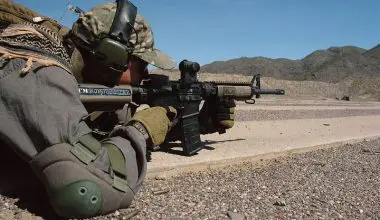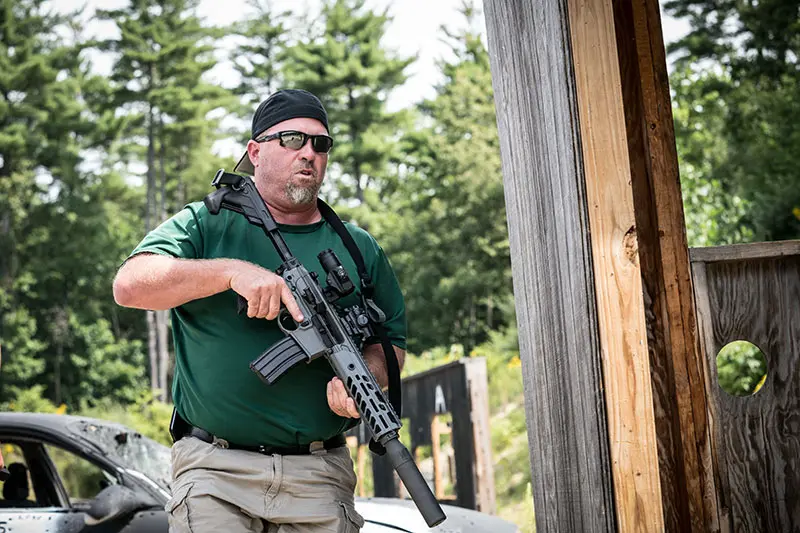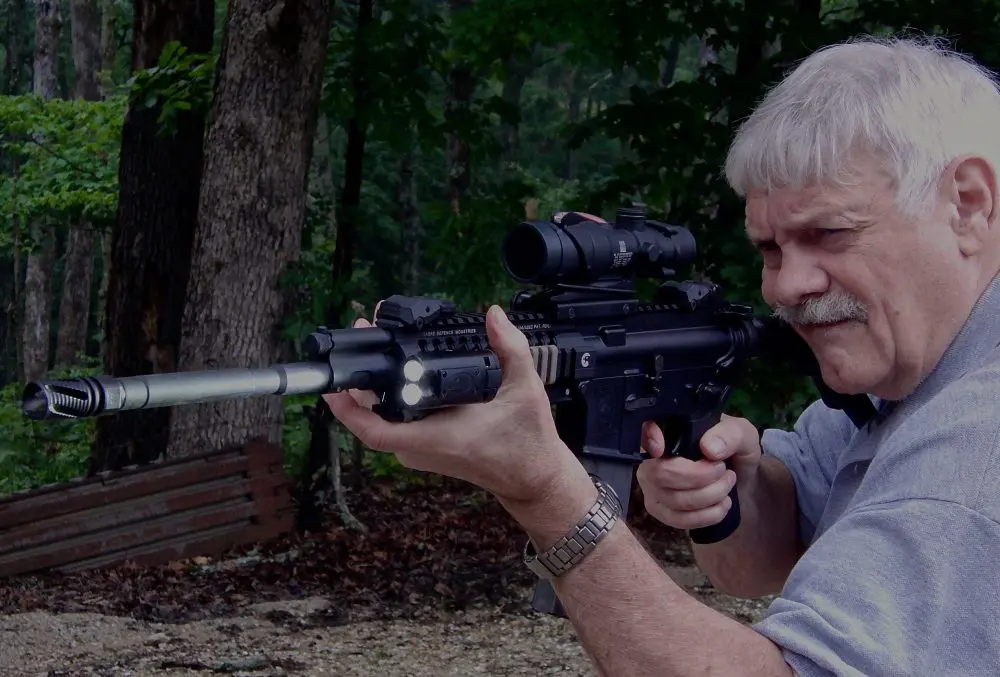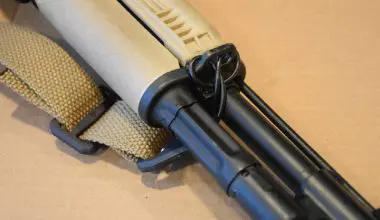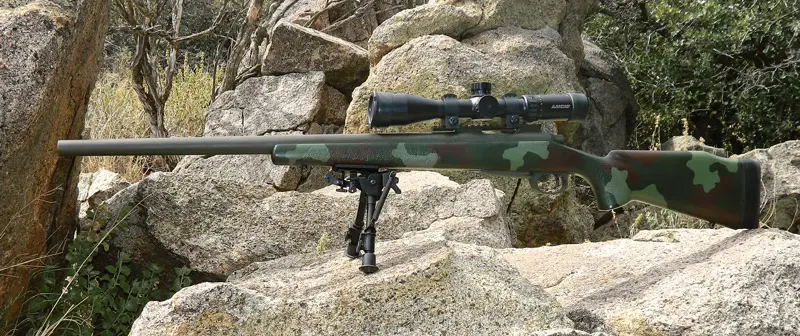 The majority of my shooting is performed at 50 yards and closer, more often than not with multiple rounds fired rapidly. As long as the shots stay in the upper chest cavity of a silhouette target, I’m generally happy.
The majority of my shooting is performed at 50 yards and closer, more often than not with multiple rounds fired rapidly. As long as the shots stay in the upper chest cavity of a silhouette target, I’m generally happy.
Every so often—whether with my own rifles or in the course of an evaluation—I increase the distance by at least twofold and attempt to place one bullet on top of another.
Recently I had the opportunity to evaluate a Tactical Rifles M40. How did it perform at these distances?
Table of Contents
BACKGROUND
In 1965 the USMC decided to replace the Winchester M70 as its primary sniper rifle. A sense of urgency resulted in a COTS (common-off-the-shelf) acquisition, and the Marksmanship Training Unit settled on the Remington 700. One version or another has been in service ever since.
One early change was to replace the wood stock—which warped badly under field conditions—with a McMillan fiberglass stock with raised comb and glass bed the action. This version was known as the M40A1 and is very close to the rifle reviewed here.
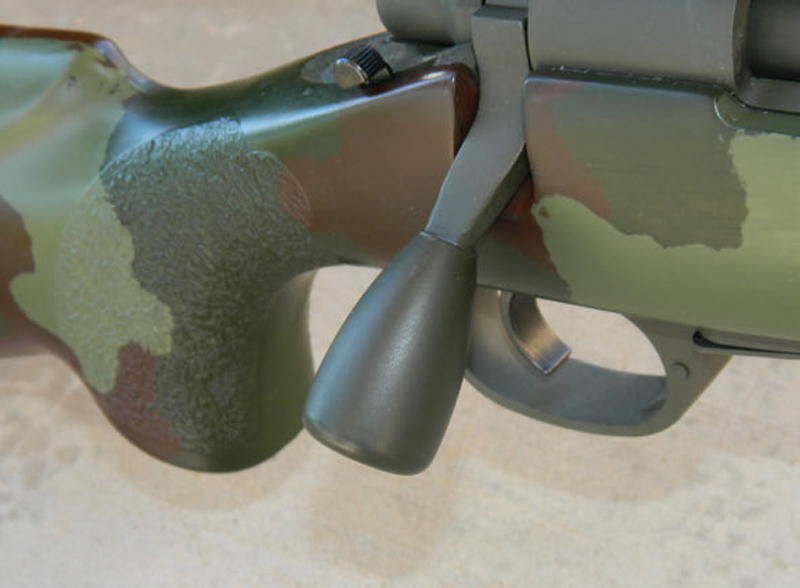
TACTICAL RIFLES M40
The Tactical Rifles M40 is available with either a Remington 700 or TR Chimera™ custom match-grade receiver. The test rifle used the Remington 700 action.
The heavy barrel has a match-grade chamber and recessed target crown. The diameter at the muzzle is approximately .925 inch. Available barrel lengths range from 17 to 26 inches. The test rifle came with a 26-inch barrel.
The M40 features a McMillan stock constructed from hand-fitted fiberglass and fully bedded. The stock has a raised comb and quick-change spacers to adjust the length of pull. The pistol grip and forend have molded-in stippling for a sure grip. There is one sling stud on the rear of the stock and two on the forend for a sling and bipod.
Standard colors are Black or Green, but there is no additional charge for Woodland or Desert Camo patterns. The colors on McMillan stocks are molded in—not painted— for years of durable hard use.
I like a good trigger, and that fact is one reason I still prefer a 1911 to most other service pistols. A good trigger is an absolute must on a precision rifle, and the M40 has one. The match-grade trigger is adjustable for a two- to four-pound release. I didn’t put it on a scale, but I would estimate the break on the test rifle at right around three pounds.
Tactical Rifles uses the “Extreme Environment” corrosionresistant finish as standard on all external metal. It is dull gray in color.
Available options, depending on the customer’s specifications, include scope, bipod, case, drag bag, cleaning and tool kit, detachable five- or ten-round magazines, stainless steel barrel, barrel fluting, and camo finishes to order.
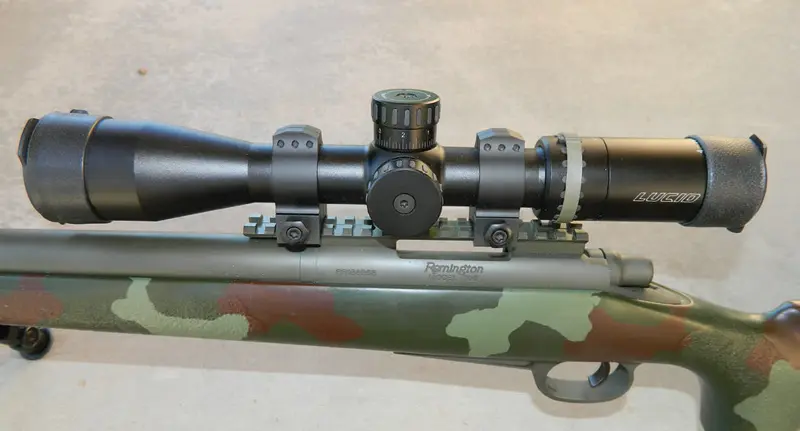
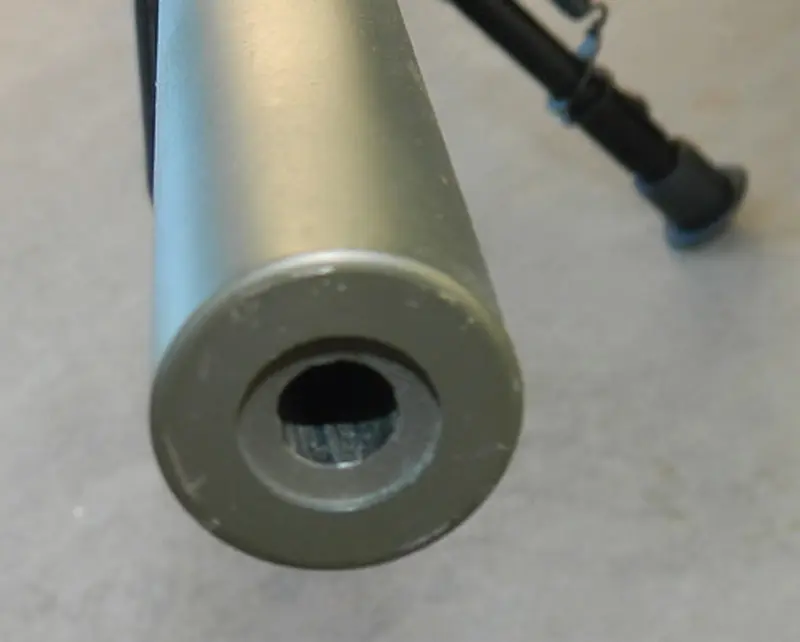
LUCID 4-16X44 CROSS OVER SCOPE
The Lucid 4-16X44 Cross Over riflescope combines the best features of a benchrest and hunting optic. The scope uses the proven L5 reticle. This optic embodies all the durability Lucid is known for, along with the crystal clear performance that allows the shooter to reach out with confidence.
The click value on the scope is 1/8 MOA, meaning very precise adjustments can be made. Turning the turret showed that each “click” could be felt and heard. The turrets are re-zeroable and lockable. Up to 50 MOA adjustments are possible with both windage and elevation turrets.
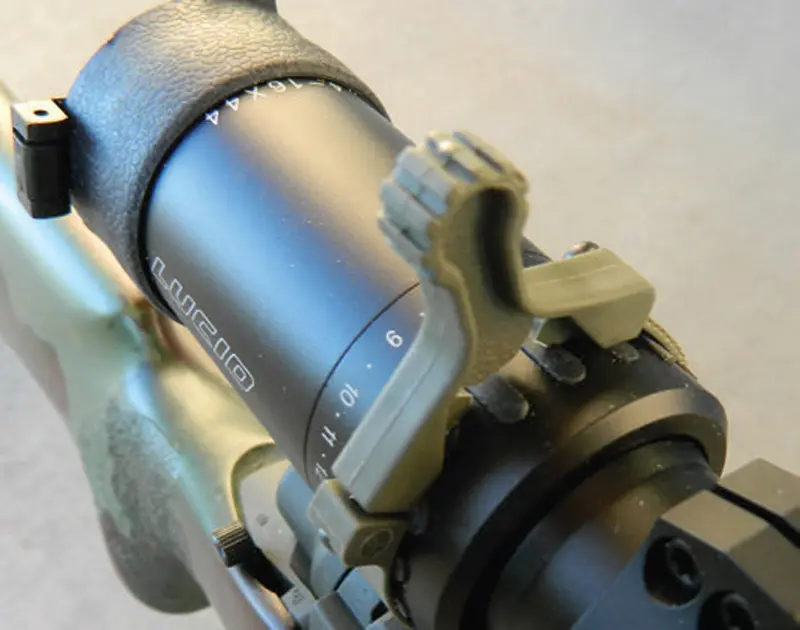
The parallax knob on the left side of the scope can be adjusted from 15 yards to infinity with numerous gradation marks in between.
I chose to use Warne Maxima Tactical Series steel rings to mount the Lucid scope, because I have always found that Warne rings perform very well.
OTHER COOL GEAR
I used a Wheeler Engineering Fat Wrench to torque the screws to the recommended 25 and 65 pounds on the screws on the rings and the base respectively. For only around $55, the Fat Wrench is a great addition to every rifle shooter’s kit because it removes the guesswork of whether the screws are over or under tightened.
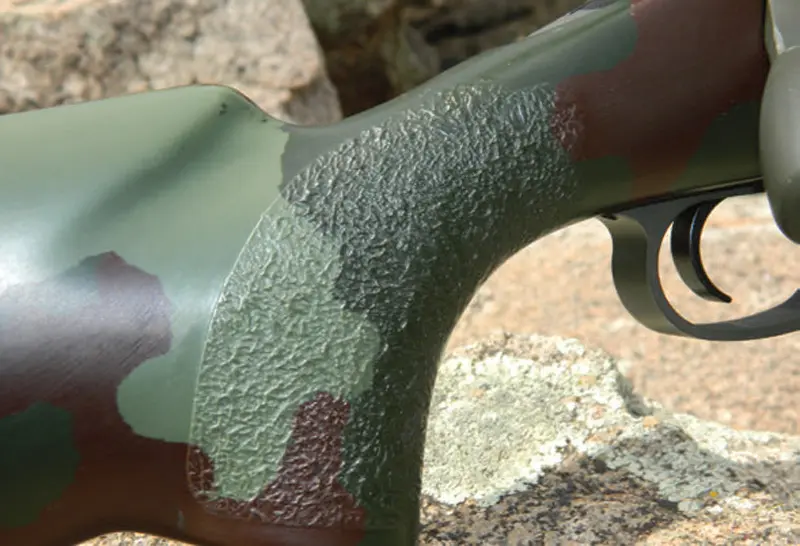
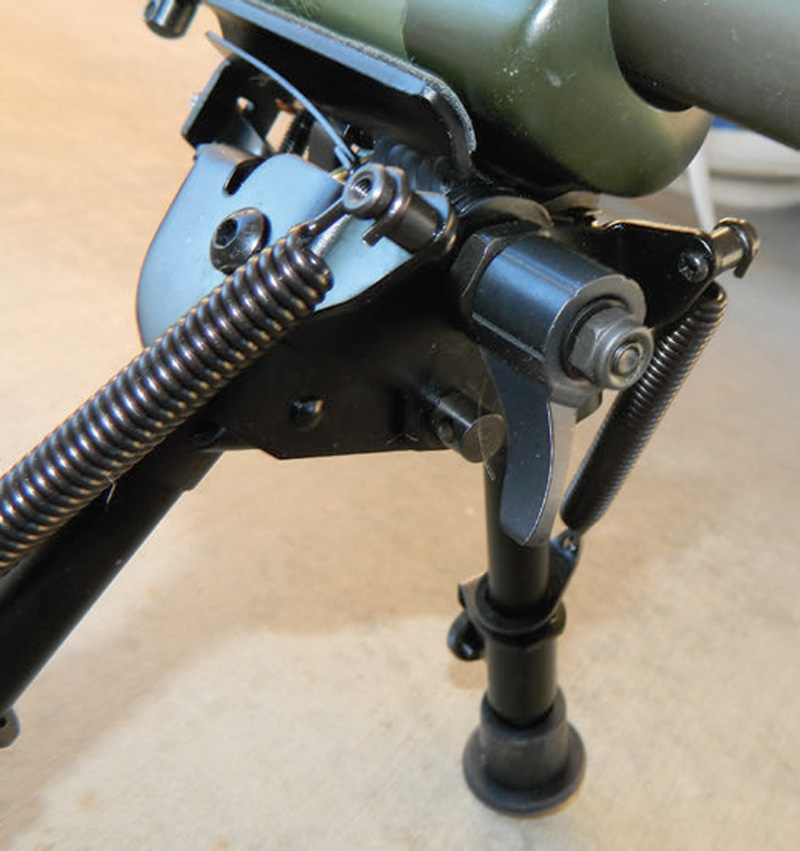
Over the years I’ve often found that, as the editor of S.W.A.T., I learn as much from the information we pass on as our readers do.
A good example of this is that I had never heard of the MGM SwitchView until I accepted an article on the device from S.W.A.T. Contributor Ethan Johns (OFFBEAT: MGM SwitchView Lever, August 2014 S.W.A.T.). Intrigued, I contacted MGM and found that in addition to the aluminum machined version, they make a less-expensive device out of high-strength nylon. It’s called the MGM Eagle Eye SwitchView. I obtained the latter from MGM and mounted it on the Lucid scope.
I’m a real ‘90s kind of guy—1890s. And although I own a smartphone, I admit I use it mostly for talking, photos and texting. I figured it was about time to get more value from it, so I downloaded the iStrelok ballistic trajectory calculator app.
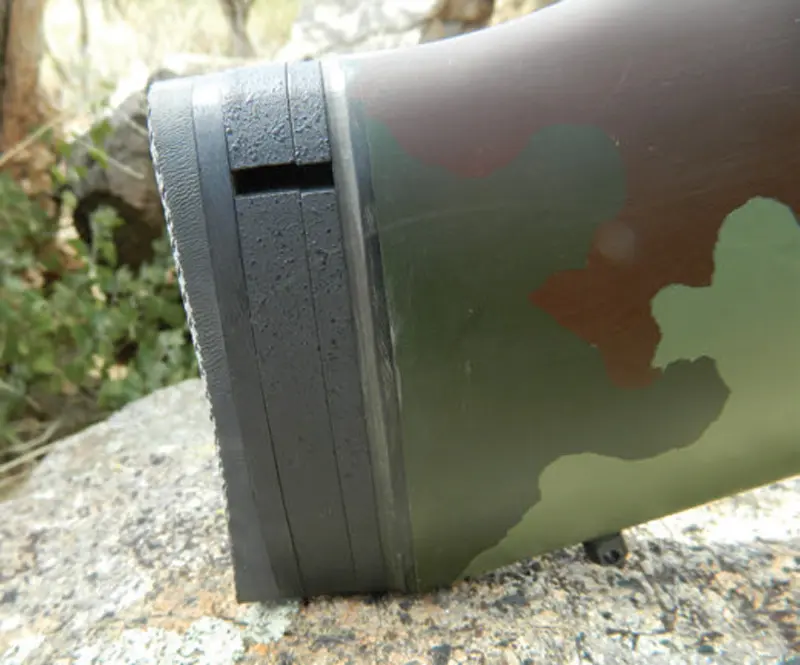
Available for both Apple and Android devices, the app supports 370 reticles from different manufacturers, including the L5 on the Lucid scope. It has the ability to input the current altitude from the phone’s internal GPS. When you input certain info—such as temperature, bullet weight, velocity, ballistic coefficient temperature, wind speed and direction—you can view accurate holdovers and windage adjustments out to 800 yards.
If I found it easy to use, it should be a snap for anyone even remotely computer literate!
Rounding out the pre-shoot gear was one of Tac Shield’s newly introduced heavy-duty bipods. The version I received was a side-to-side pivot model for use on uneven ground. The legs are adjustable from six to nine inches and can be locked at any length within the adjustment range. Using a lever on the front of the bipod, the pivoting feature can be locked in position.
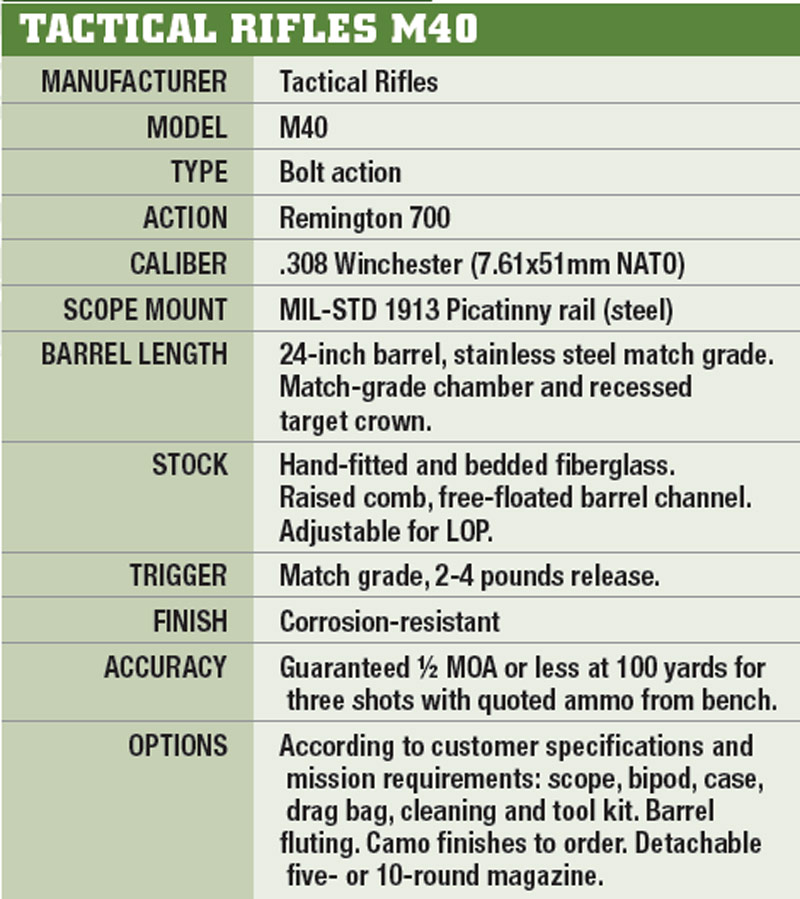
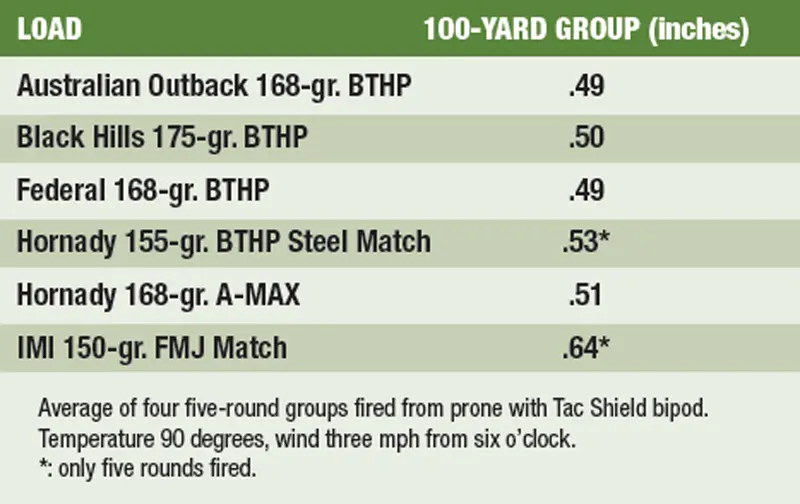
FIELD EVALUATION
I took six Match loads with me to the range, from manufacturers Australian Outback, Black Hills, Federal, Hornady (2) and IMI. The bullets varied in weight from 150 to 175 grains. Checking the rifle for fit in the prone, I removed the smallest spacer from the recoil pad.
The first three-round group for zeroing the Lucid scope was two inches high and two and a half inches right. I made the corrections and proceeded with the evaluation. All shooting was from 100 yards prone with the Tac Shield bipod.
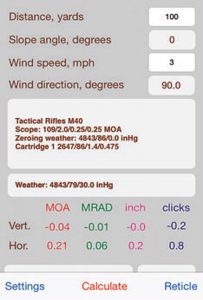
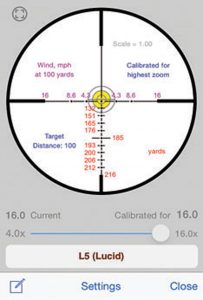
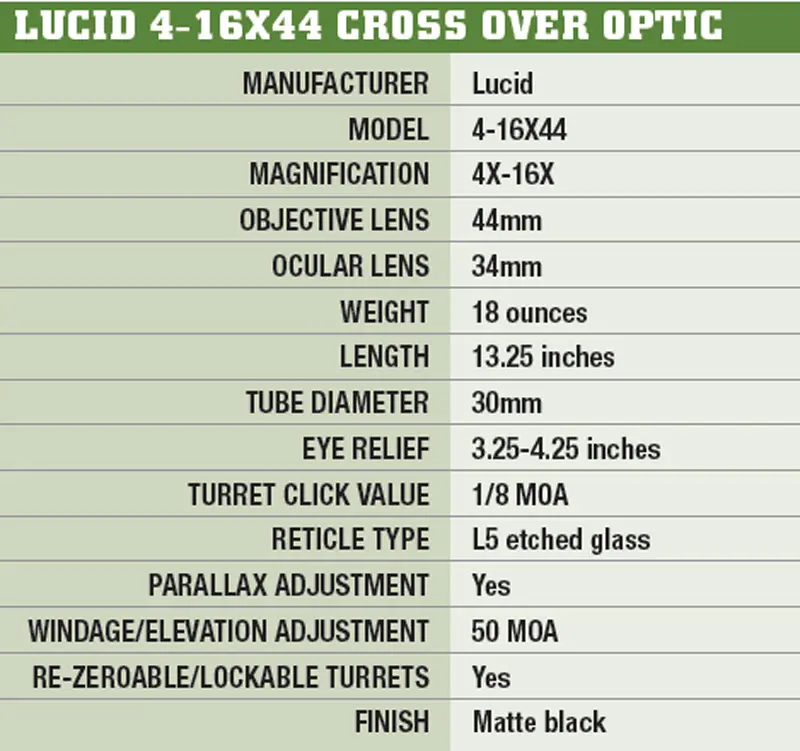
As many rifles tend to string shots when hot, and I was trying for the best precision possible, I would fire ten rounds and then sit the rifle in the shade with the bolt open to allow it to cool for a few minutes before firing the next ten rounds.
Twenty rounds of each load were fired with two exceptions. Both Hornady 155-grain Steel Match and IMI cases stuck in the Match chamber. The IMI case could be extracted by sitting the rifle on its recoil pad and firmly striking the bolt handle, but the Hornady steel cases required firm taps with a rubber mallet. I only fired five each of these loads for grouping.
The largest group fired was the IMI 150-grain FMJ Match at .64 inch. The smallest group was a tie between the Australian Outback (from DKG Trading Company) and the Federal load, both using 168-grain boat-tail hollow points (BTHP) at .49 inch. The remaining groups were Black Hills 175-grain BTHP at .50 inch, Hornady 155-grain BTHP Steel Match at .53 inch, and Hornady 168-grain A-MAX at .51 inch. The difference between the “best” and “worst” was only five one-hundredths of an inch.
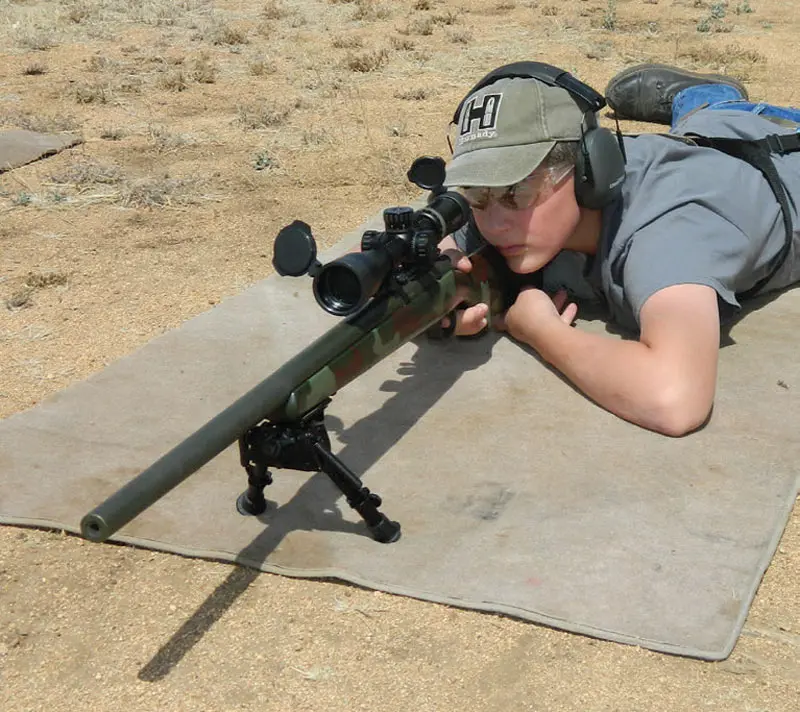
Wanting to try out the iStrelok ballistic trajectory calculator app, I went out to 200 yards with five rounds of the Australian Outback loads. Going to the Table setting, it showed I should come up 1.78 inches. I quickly made the corrections to the Lucid scope and fired the five rounds. The group measured just less than one inch (actually .99), bearing out Tactical Rifles’ guarantee of ½ MOA accuracy.
The Eagle Eye SwitchView worked very well, though the nylon material it’s made from stretched a bit and required it to be tightened down. I plan on adding them to the scopes on all my hunting rifles and will likely add the machined aluminum version to my hard-use guns.
Most people do not need the accuracy afforded by the Tactical Rifles M40. If you are one of the few who do need this kind of precision, or enjoy using less than one inch of a target, the M40 is hard to beat.
